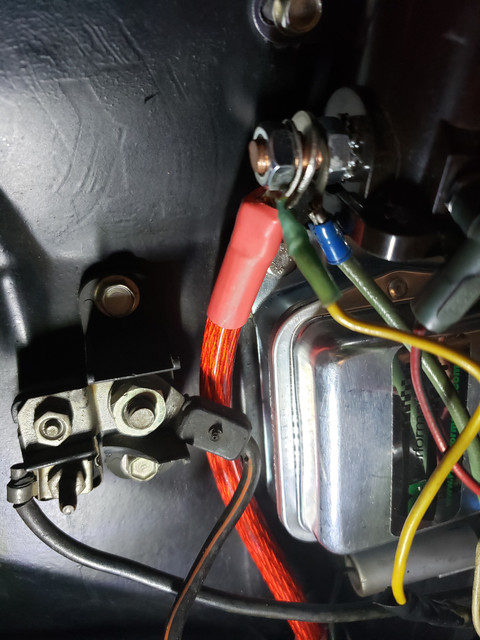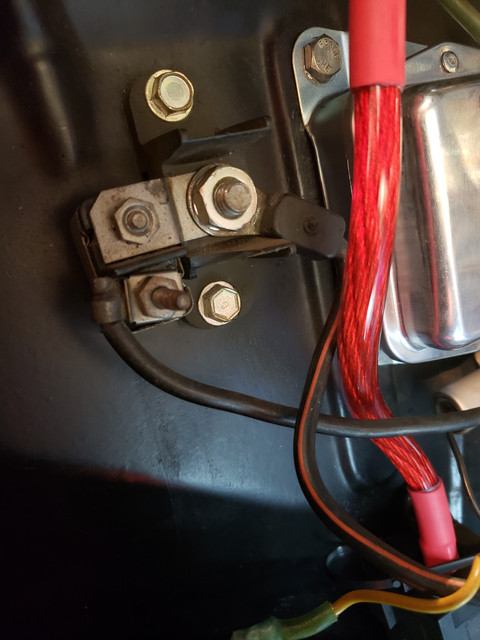164runner
Well-known member
PA PERFORMANCE 3G upgrade. factory alternator wire harness removed. installed 4 GA wire from alternator to starter solenoid, or does it need to go where the factory installed it? from what I have found this is called the starter distribution block { could be called something else }. or do I leave there 4 GA wire on starter solenoid and run a 2nd wire to the distribution block? not showing in picture is factory wire from alternator. the 2 wires on the distribution block, black/orange stripe go to main harness, goes under radiator and back to firewall. smaller wire goes across shock tower brace and in firewall by brake booster. if I only run the 4GA wire to the starter solenoid, I don't see how the main wiring harness will get power
























































